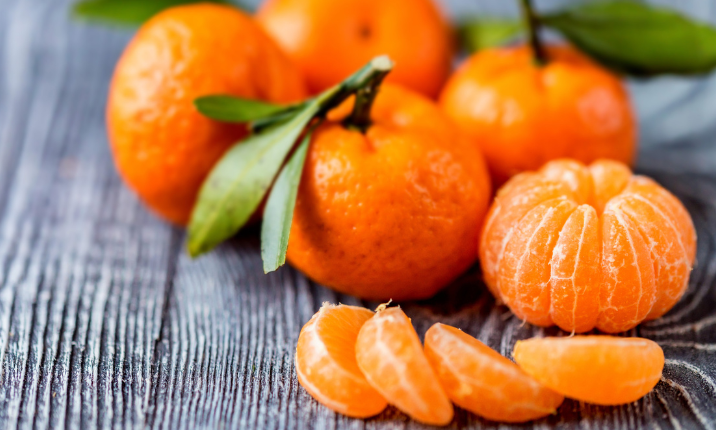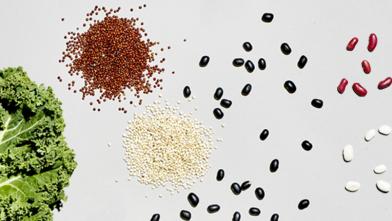Grown mostly in California, mandarins are considered a winter fruit and are in season November through April. This is when a lot of other fruits are out of season, like berries.
Common Types of Mandarin Oranges
- Clementines: The smallest mandarin orange, they are seedless and very easy to peel, making them a great choice for kids.
- Tangerines: This larger variety of mandarin orange is more tart and has a deeper orange/red color.
- Sumo: A larger variety that has the most intense orange flavor.
- Satsuma: Originating from Japan, this seedless variety has a thicker, more delicate skin and bruises easily, making it great to eat locally or used in canning for shipment.
How to Pick and Store Mandarin Oranges
Clementines are usually found in two- or five-pound bags, while tangerines and sumo mandarins are sold individually. Choose fruits that look heavy for their size and are unblemished. Store mandarin oranges in a cool, dark place such as the fridge. They’ll ripen much quicker at room temperature and easily mold if not eaten within a week. Mandarins stored in the fridge can last from two weeks to a month.
Mandarin oranges can also be found in the canned foods aisle. Be sure to choose canned or packaged mandarin oranges labeled as “no sugar added” and drain well before eating to help reduce the effect on blood glucose (blood sugar). Mandarin oranges aren’t typically found in the freezer aisle, as freezing reduces the taste and texture of oranges.
Nutritional Benefits of Mandarin Oranges
Mandarin oranges are delicious and full of nutrition, all in a tiny package! A large 120g mandarin orange (about 2 ¾ inches in diameter) has about 60 calories and 15 grams of carbohydrates. Smaller sized clementines contain about 35 calories and 10 grams of carbohydrates.
Mandarin oranges are also an excellent source of vitamin C, which is an antioxidant that helps the immune system function and creates collagen, essential for wound healing and healthy skin. A large mandarin orange contains more than 50% of the vitamin C you need in a day.
Ways to Eat Mandarin Oranges
Easily peeled and separated into segments, mandarin oranges make excellent quick snacks for both children and adults. They’re also easy to transport for packing in lunch boxes or hiking backpacks. Segments of mandarin oranges can be used in both fruit and veggie salads, salsa, tacos, parfaits, and so much more. Larger mandarins like tangerines and satsumas are juicier than the smaller varieties and can be juiced to use in salad dressings and marinades.
Diabetes-Friendly Orange Recipes
Want some more inspiration for using mandarin oranges? Try these diabetes-friendly recipes that feature this small citrus powerhouse.
Broccoli and Mandarin Orange Salad














